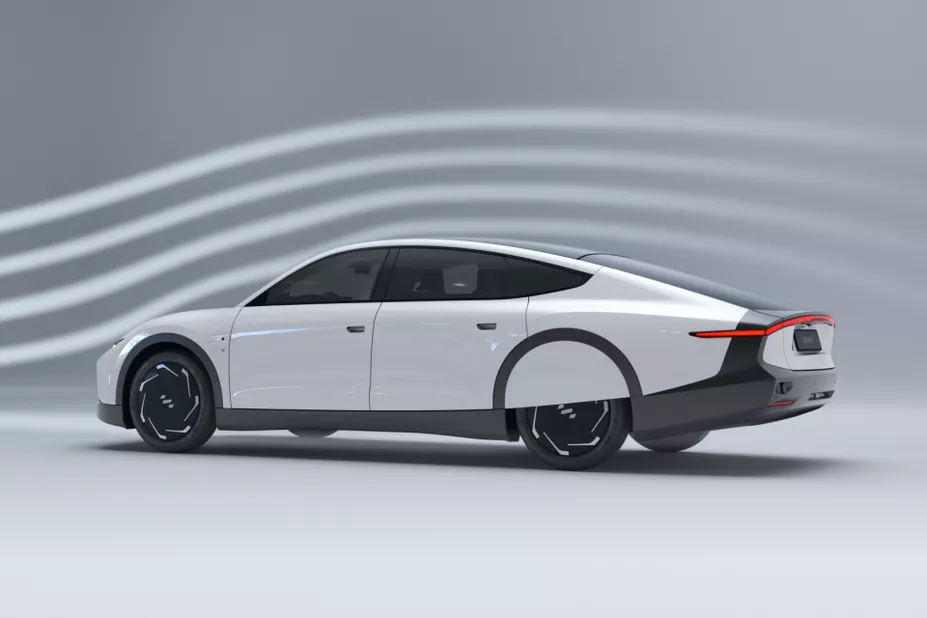Lightyear 0 becomes the World’s First Car that charges while driving using Solar power which gives you a free ride every day, as long as the sun shine in the sky. The car had started its production recently.
Electric Vehicles are one of the topmost revolutionary outcomes in the automobile industry in overall history. The effect of gasoline vehicles on climate and environment pushed the need to shift to EVs. Though EVs are considered as clean and green, people hesitate due to its range-anxiety drawback it provides to users. That’s where electric-car makers like Tesla, BYD in China and others strive to accomplish the feat of longest range in a single charge.
Now, with this Lightyear 0, you may no longer need to charge the vehicle to drive most of the times. The car with solar-panels affixed onto it charges all day regardless of being driven or parked.
The car no longer requires shade to park, but the hotness of the sun to be felt!
Lightyear 0 ‘Solar’-cum-EV Car
Dutch company Lightyear officially commenced the production of its first vehicle – ‘Lightyear 0’ hailing the title of First Automotive firm to manufacture a solar electric-vehicle.
The four-wheeler’s entire roof integrates curved solar panels co-aligned with its design which will convert the solar energy from sun into its fuel for driving. The solar panels are also included on its bonnet and tailgate – wherever it makes sense to house it, rendering a total of 53 square-feet of solar panels.
Lightyear 0 can solar-charge at a rate of 1.05 kW, yielding 6.2 miles of range in an hour or 40 miles (70km) of free ride every day. That’s a coincidence of an average American commute in a day – 41 miles to and from work.
“With an infinite power source like that on its roof, Lightyear 0 can drive for months without charging.”
The car has a 60-kWh battery pack for delivering an estimated range of 388 (625km) miles on a single charge (i.e., 320 miles under EPA test cycle of US). An overnight charge allows the car to be driven for 300km, the company says.
Lightyear 0 accepts pre-orders costing €250,000 (Europe) / $263,000 (USA) / ₹2.16 Crores (India). However, the company accepts orders from only Europe currently.
A startup in California also had approached the same of delivering a solar-car called ‘Aptera’, which is a three-wheeled fully solar-powered e-vehicle, aimed to proffer 65km of free range using solar and a whopping 1600km range for a single charge. However, the three-wheeler is still in development phase and the company had not yet spoken anything about the launch-date. Read more here.
More Specifications and Features of Lightyear 0
The 4–5-seater sedan has a drag coefficient of just 0.175 which is a record in the car-world. (A low drag coefficient means that car consumes less energy and so can have a long-range). Claiming for an efficiency rate of 10.5kWh per 62 miles, it more-or-less matches with Mercedes-Benz Vision EQXX concept car that used 8.7kWh per 62 miles during a real-world test.
“After six years of developing its own technologies, Lightyear has surpassed one of the most challenging phases for new automotive companies: entering the market with novel technology,” Lightyear stated.
Related Posts
Stretching to five meters and weighing 1,575 kilograms, the sedan has a top-speed of 160 kmph. The body of the car is made panels of reclaimed carbon fiber and aluminium. The sedan replaces mirrors with cameras – one for rearview, one for parking and two side cameras – a total of four.
At the Valmet Automotive facility in Finland, the firm plans to produce 946 Lightyear 0s this year – with plans to scale up production in the first quarter of 2023 to help wealthy city-drivers decarbonize.
As most of the people can’t afford a six-digit (eight-digit in India) price for a car, Lightyear plans to launch an affordable Lightyear 2 at an expected tag of €30,000 ($31,560 in U.S / ₹26 Lakhs in India).

